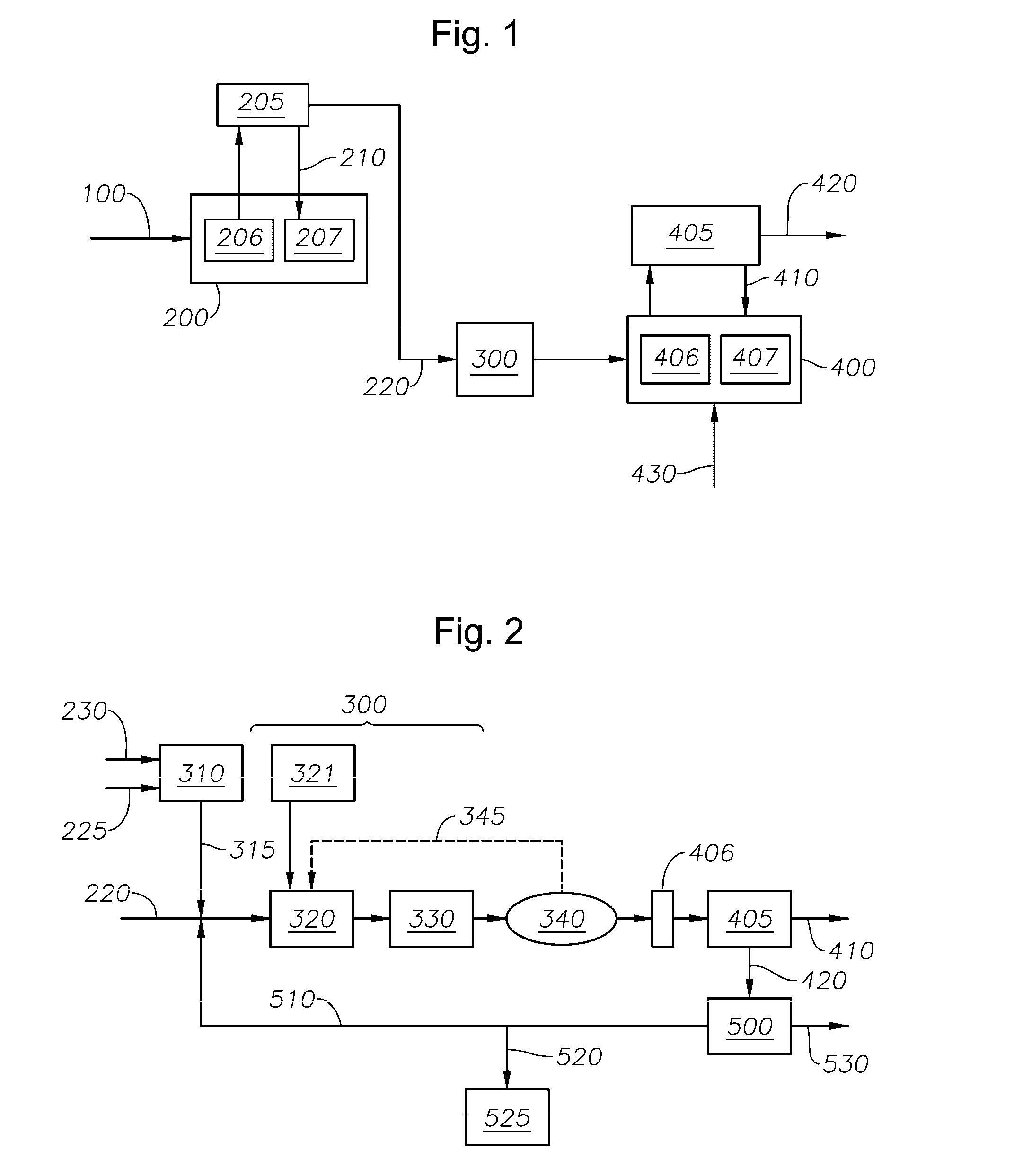Integrated Process and System for Steam Cracking and Catalytic Hydrovisbreaking with Catalyst Recycle
- Summary
- Abstract
- Description
- Claims
- Application Information
AI Technical Summary
Benefits of technology
Problems solved by technology
Method used
Image
Examples
example 1
[0064]Catalytic hydrovisbreaking lab tests were conducted using Cold Lake vacuum residual oil in autoclave reactors for 180 seconds at 870° F. (465.6° C.). Results are summarized in Table 1. It can be seen that catalytic hydrovisbreaking provided improved CCR conversion and greatly reduced coke as compared to visbreaking and hydrovisbreaking without catalysts.
TABLE 1Treat Gas(1300 psig N2H2H2(8963 kPa-gauge))(visbreaking)(CHVB)(hydrovisbreaking)Catalyst load (ppmw)01000975° F.+ (523.9° C.+) 3548.148conversion %CCR conversion %generates 10%15generates 2%Coke wt %Coil coked0.151.7
example 2
[0065]Related experiments were carried out using higher catalyst concentrations at a lower temperature of 775° F. (413° C.) and for 120 minutes using arab light vacuum resid. Table 2 below illustrates representative results. Higher catalyst concentrations improved metals removal, CCR conversion and increased saturates production.
TABLE 21050° F.+ conversion5053Catalyst load (wt %)0.62.4Demetallization %6596CCR conversion %3346Increase in saturates %1215
[0066]While vacuum resid catalytic hydrovisbreaking is known for fuels processing, the integration of CHVB with a steam cracking furnace including an integrated knockout drum is not known. Moreover, use of CHVB processes with high catalyst concentrations and catalyst recycle is not well known. Those skilled in the art of heavy feed processing are familiar with the difficulties of operating heavy feed steam cracking and coking processes without fouling. It is not obvious how to integrate the processes without further aggravating these p...
PUM
 Login to View More
Login to View More Abstract
Description
Claims
Application Information
 Login to View More
Login to View More - Generate Ideas
- Intellectual Property
- Life Sciences
- Materials
- Tech Scout
- Unparalleled Data Quality
- Higher Quality Content
- 60% Fewer Hallucinations
Browse by: Latest US Patents, China's latest patents, Technical Efficacy Thesaurus, Application Domain, Technology Topic, Popular Technical Reports.
© 2025 PatSnap. All rights reserved.Legal|Privacy policy|Modern Slavery Act Transparency Statement|Sitemap|About US| Contact US: help@patsnap.com


